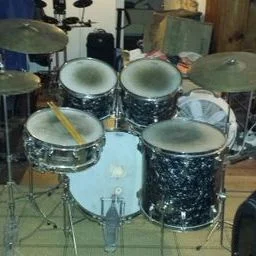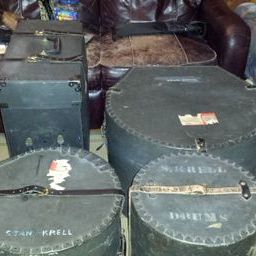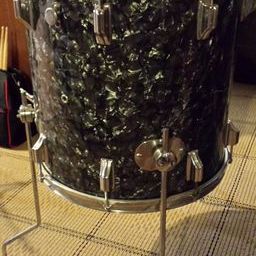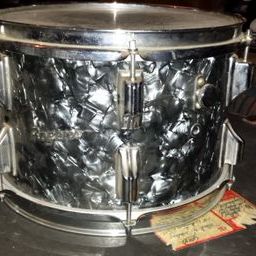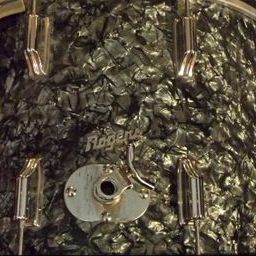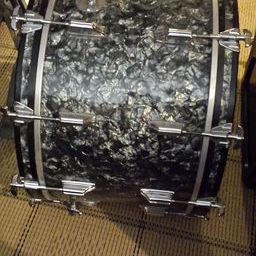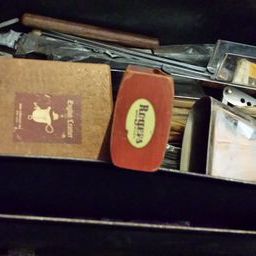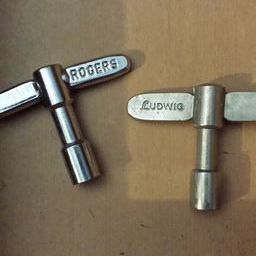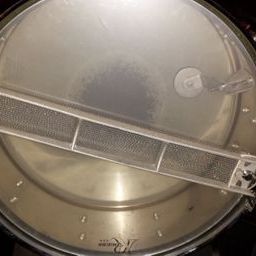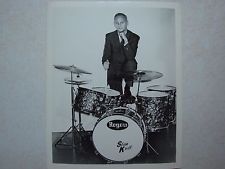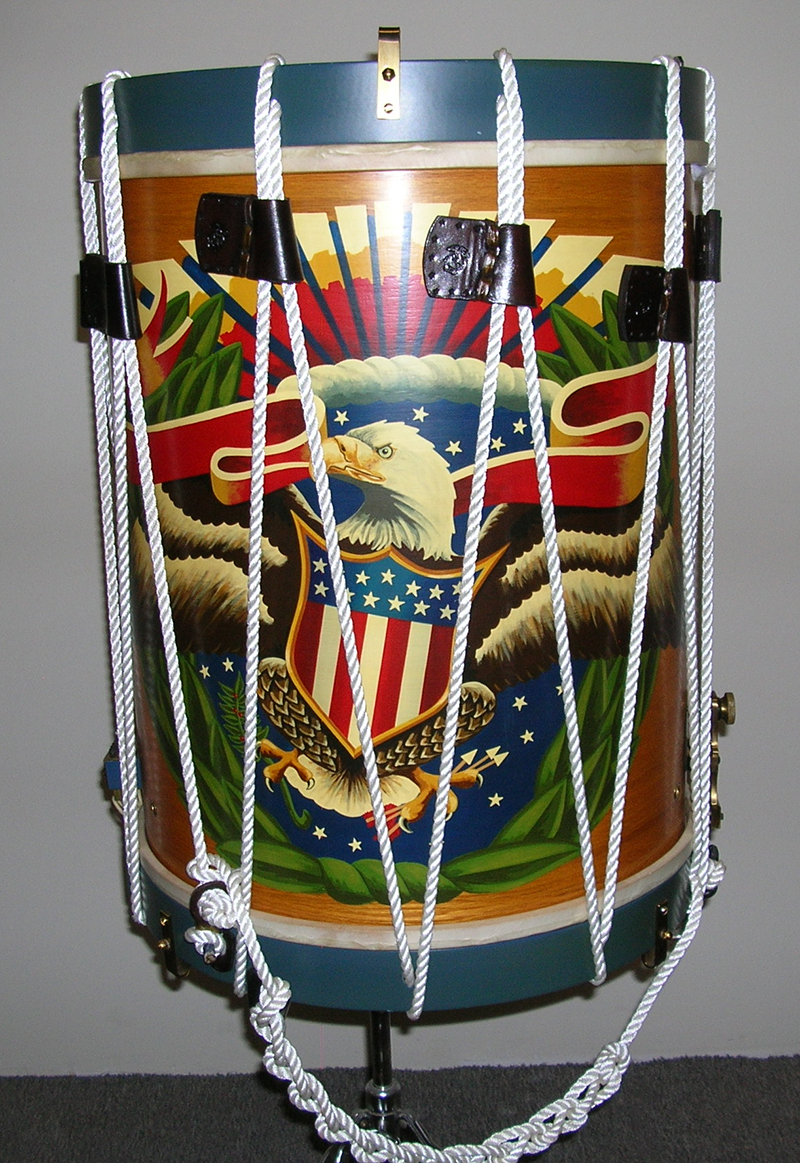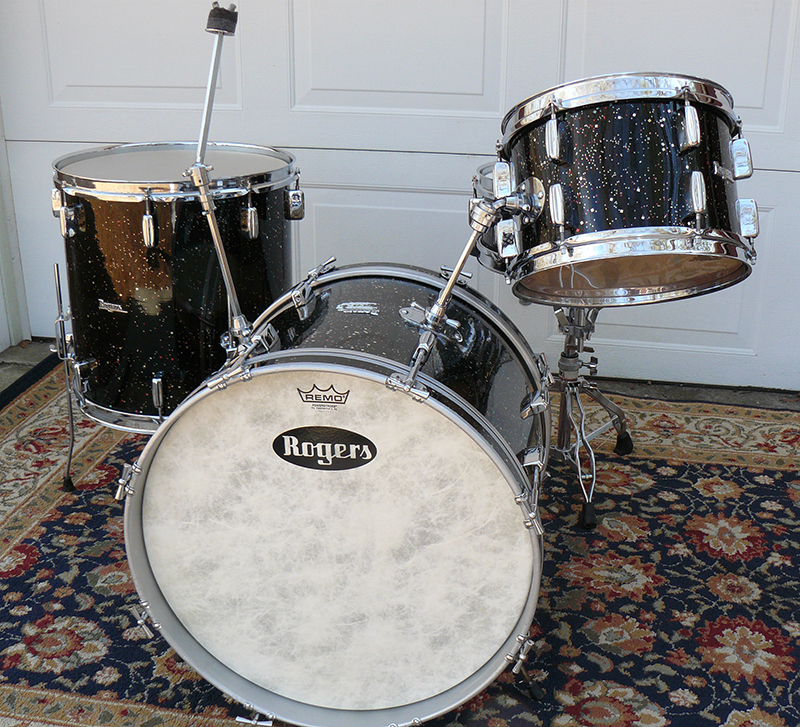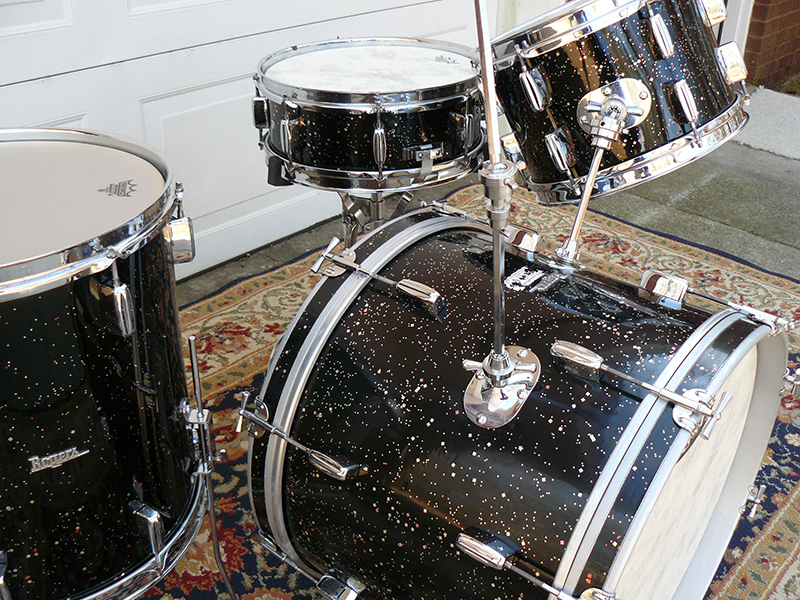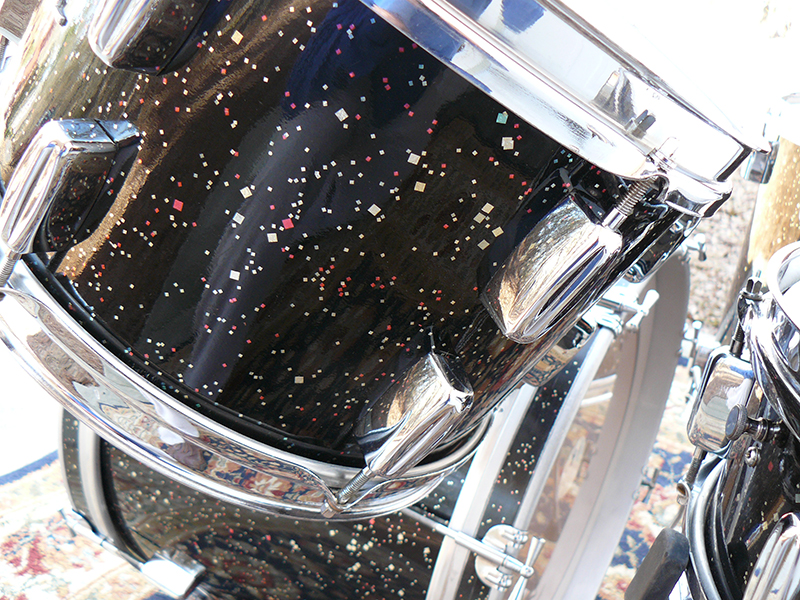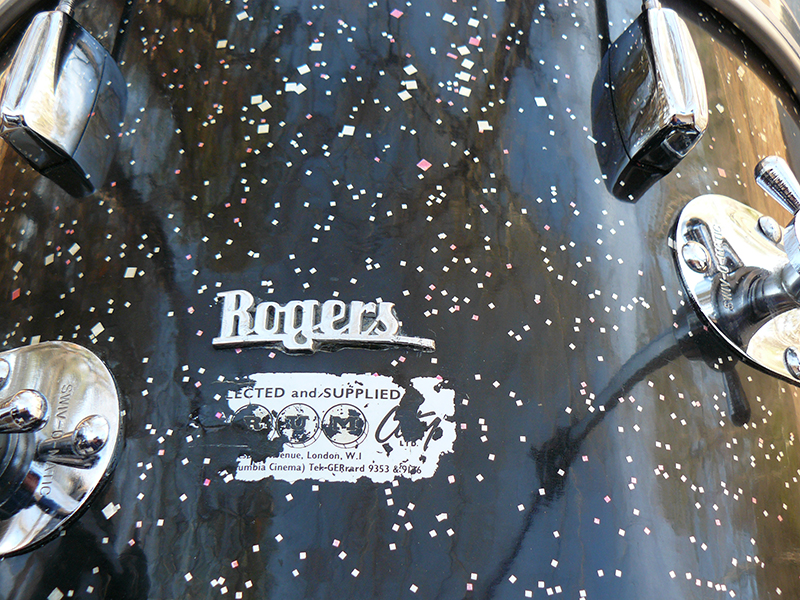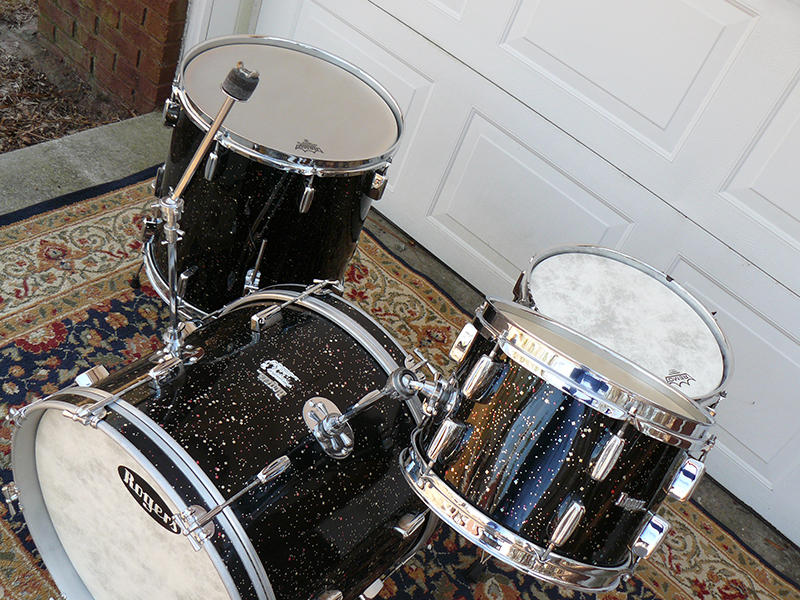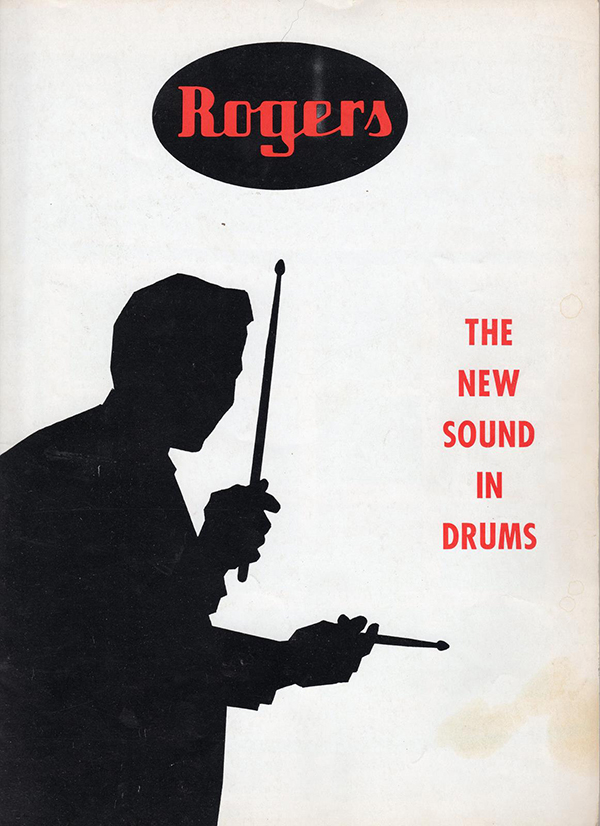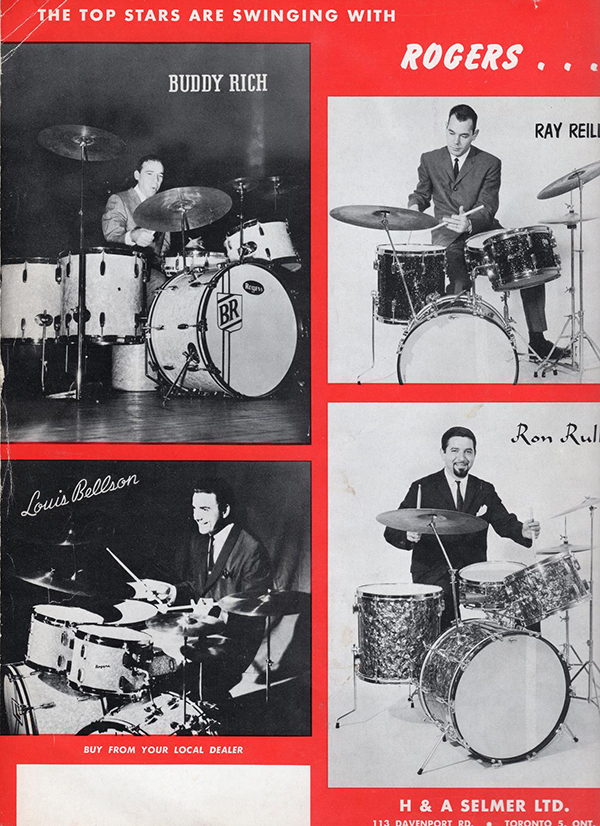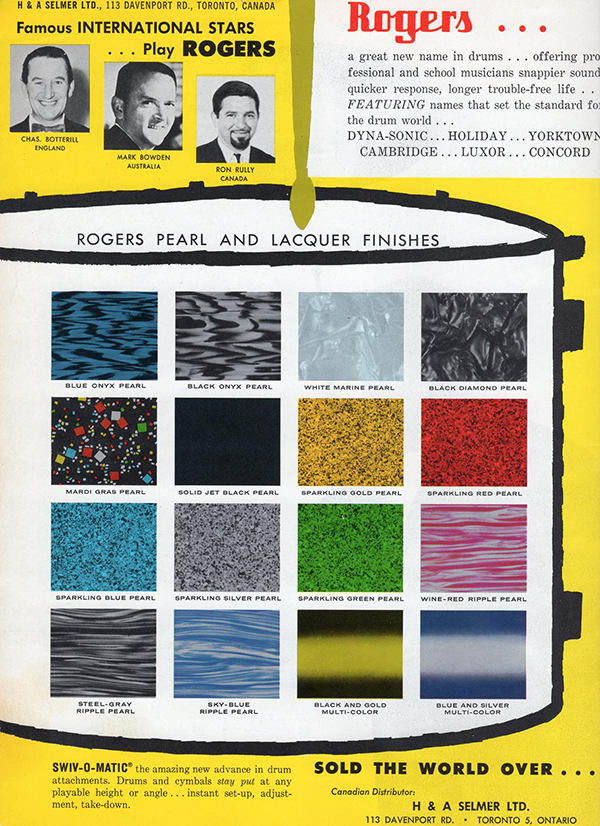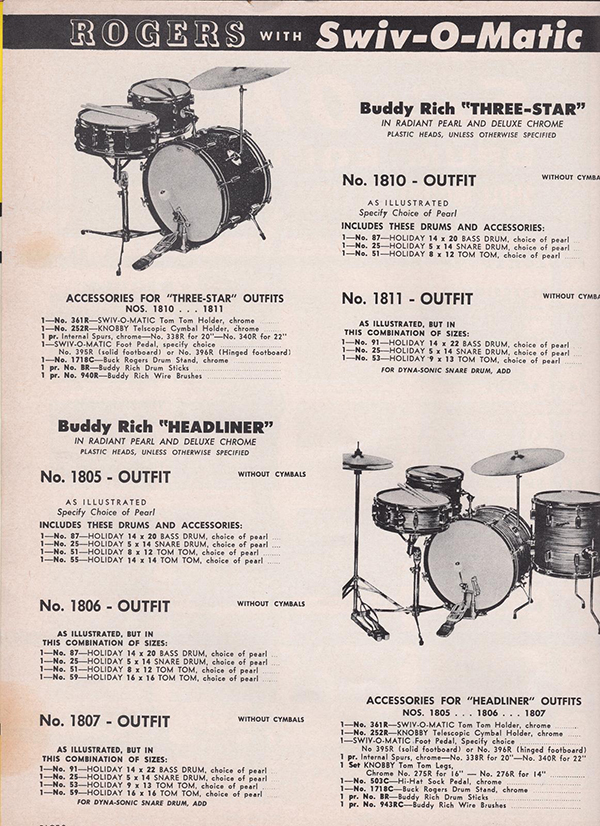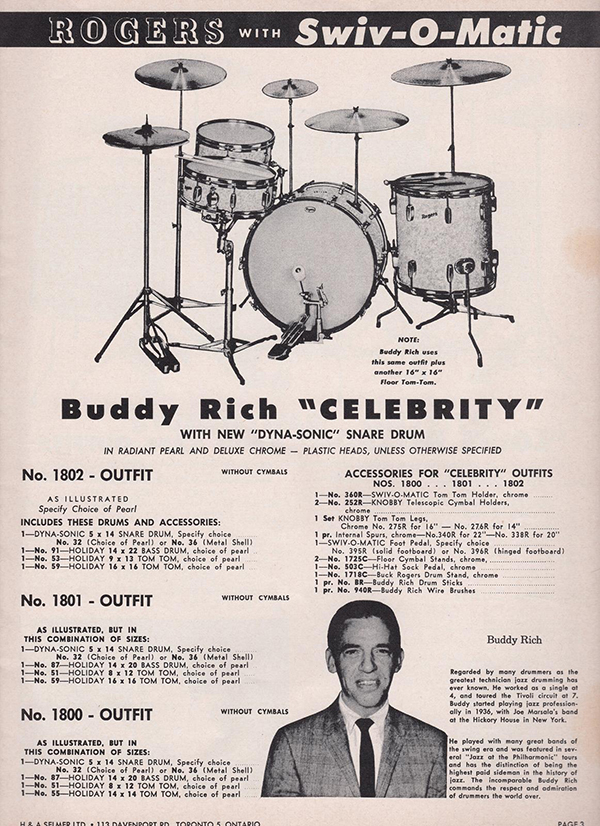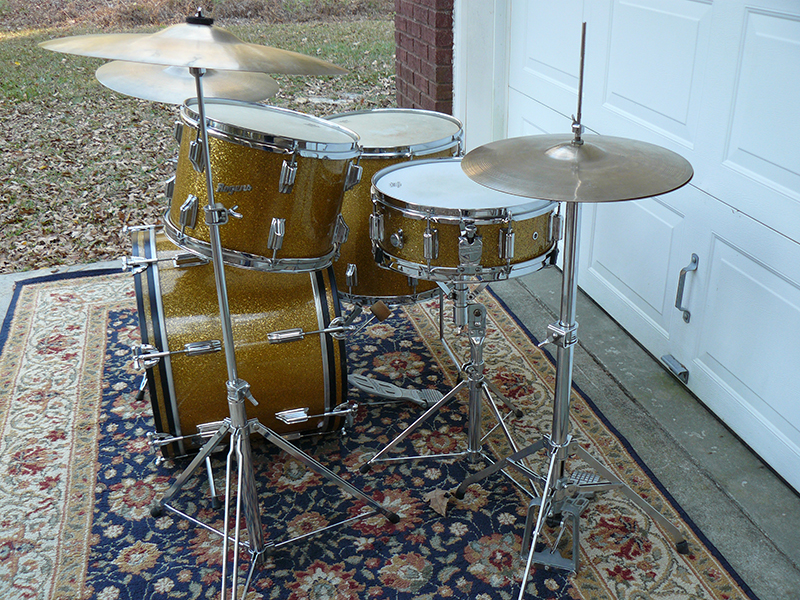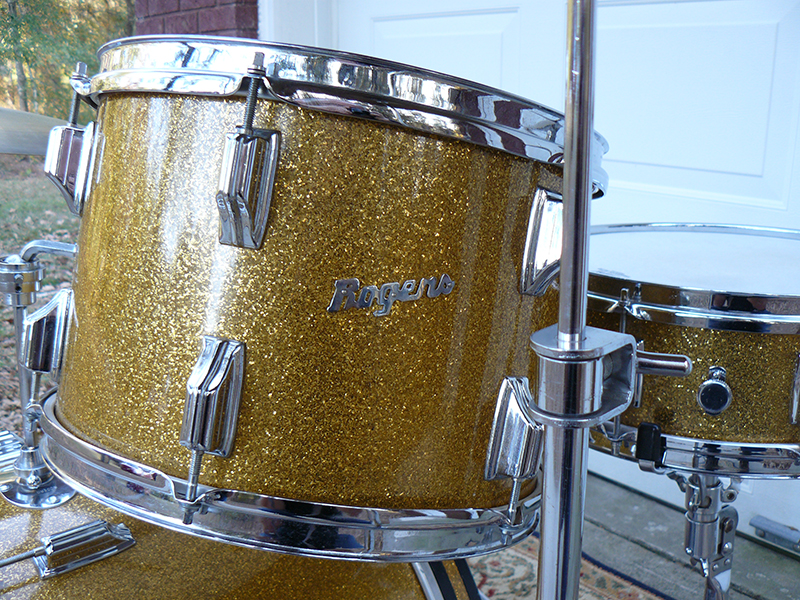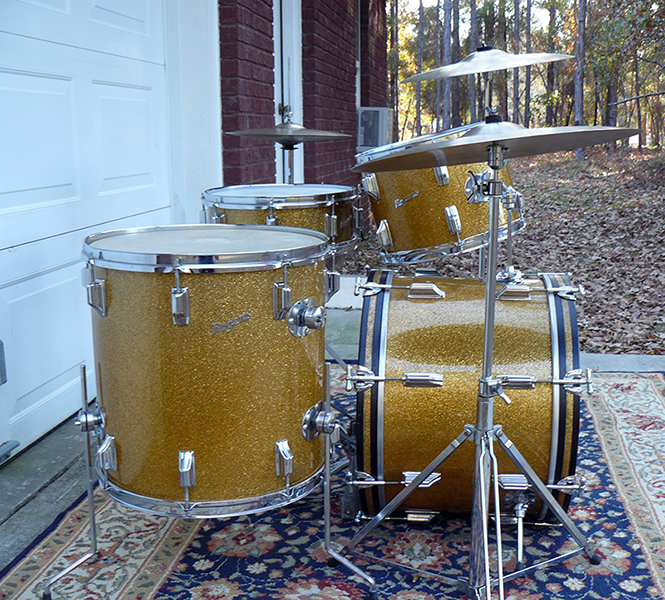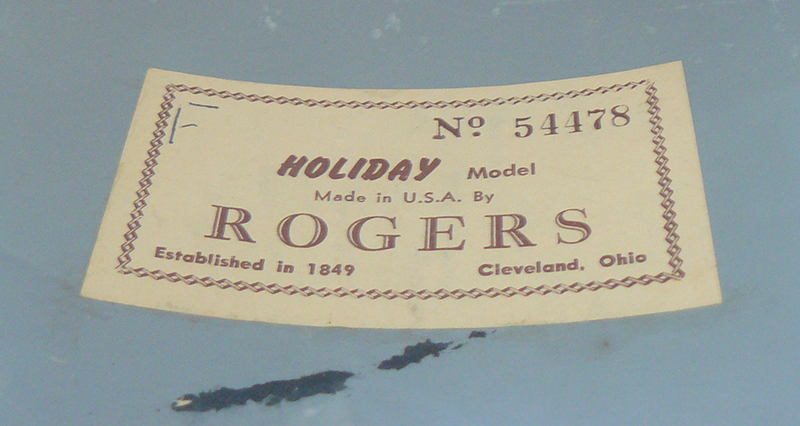by Robert Bernhardt
Recently I acquired a set of Rogers Holiday drums from the Covington, OH era. I bought Stanley Krell's drums. He was a Rogers endorser in the early 60's. I think these drums were stored in their cases for the past few decades at least. The snare drum with this set is a very early/rare pre-oval badge Dynasonic. According to one of the resident experts at the Rogers Owners Forum, this is a once in a lifetime find.
I found these advertised on Craigslist. With the ad already posted for six days I didn't expect to even get an email back from the seller. Sure enough I got a phone call within thirty minutes of my emailing him. I arranged to go have a look at the drums that afternoon, knowing I needed to act quickly if I wanted to have a chance at buying these. Luckily, because of the Thanksgiving holiday weekend, I was the first person to see these. I'm new to the Rogers addiction, so I hadn't even seen a Holiday set in person. The second I saw these I knew these were different than the Fullerton script logo drums I just bought a month ago.
I bought these four cases full of vintage drums and drum equipment. The name on all the cases, as you can see, is Stan Krell. I got them from a wonderful guy named Joe, who buys estates. He got these with the rest of the contents of a home out on Long Island. The homeowner told Joe she bought these drums for her son, back in the sixties, from Stan Krell.
As you can see on the tag, the Dynasonic is serial number 3660. No oval badge, just the script logo. It seems to have the original reso head on the bottom. Needs a good cleaning but seemingly in very good shape for a fifty year old drum. The 12" tom seems to be the oldest, but I'll leave that for the experts. It's got a Cleveland sticker, serial 10880. The 13" tom has a Dayton sticker, with serial 88281. The 16" floor tom has a Cleveland sticker, serial number 42570. The 22" bass drum has a Dayton sticker, with serial 80690.
All drums seem to have the original Rogers heads still, with the exception of the snare. There is one beat up, 14" head in that rolling case though. Hard to tell if it's a Rogers now, but it's there nonetheless. I included a picture of a T-Rod and Claw as an example of the condition this entire set is in. I have a feeling these have been sitting in their cases since the sixties.
Camco bass drum pedal, Swivo HH stand, two 18" Zildjian Rides, 14" Zildjian hi hats, and what seems to be a Ludwig 10" splash cymbal. (Did they call them splashes back then?) The Rogers woodblock is interesting. Didn't do much research on it. I have to imagine that's rare. The cowbell seems very well made. No name on it, but it says Ludwig on it's hardware. A half dozen pairs of Regal Tip sticks from that time period. Some no name brushes, heavy and wiry. A Rogers drum key and a Ludwig drum key. The custom road cases themselves also just really add to the completeness of this find.
I'm going to play these drums. I'll probably re-skin them after an hour of light playing to preserve the heads, but I can't wait to get some time behind this set. I will never break any of this up either. That woodblock will not go up on eBay just because it's probably rare. I really think that Dynasonic should remain with the rest of this set too. Like I said in my original post, this is really like a time capsule. I definitely intend to keep it that way.
I welcome any info any of the experts would like to share regarding these drums. From what I can tell from the dating guide, the 12" was possibly made in 1957?!?!? The FT is early/mid sixties Cleveland while the 13" and the BD are mid/late sixties Dayton. That's all the research I've done so far.

